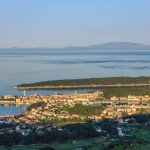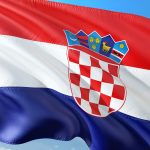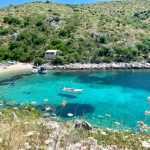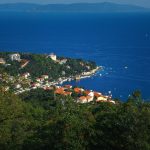June the 14th, 2024 – There are some promising Zagreb thermal lake and spa plans currently on the horizon for the capital, which will significantly increase its overall offer.
As Poslovni Dnevnik writes, geothermal energy was discovered in Zagreb over four decades ago, and it is known that the city lies on rich sources of this renewable energy. However, only a small part of the capacity is currently being used despite it being known that these sources under the capital are very rich indeed.
In order to change this, the Faculty of Mining, Geology and Petroleum has prepared the necessary documentation for obtaining permits for the construction of wells, Radio Sljeme announced.
The Mladost swimming pools, the athletics stadium and the Faculty of Kinesiology already all use geothermal energy for heating, and plans to expand the system are ambitious – including a new Zagreb thermal lake and spa. In September, the Stjepan Radić student dorms will be connected to the grid, and the future children’s hospital in Blato will also use this form of energy.
In addition, connection with the HEP Toplinarstva network is planned next year, and by far the main advantage of geothermal energy is lower costs.
“Currently, only 5 to 10 percent of Zagreb’s geothermal potential is being used, depending on the season. The potential is much greater and in four to five years we could replace fossil fuels with this source of energy. The water temperature is quite sufficient for heating residential buildings”, said the dean of the Faculty of Mining, Geology and Petroleum, Professor Vladislav Brkić.
zagreb thermal lake and spa in the future
“Zagreb has already set aside 370,000 square metres of land for a thermal lake near the hospital in Blato, next to the golf course. Property and legal relations are currently being resolved. In addition, the City of Zagreb and the state are busy resolving the ongoing property issues for the future Blato hospital. We have several interested investors and w’ already created a conceptual solution for the project. It would be the largest geothermal lake in all of Europe, open like a volcanic crater for swimming,” announced the concessionaire of the Zagreb geothermal field, Željko Jurilj.
In addition to the upcoming Zagreb thermal lake, the construction of various spas and sports and recreational facilities is planned.
Jurilj pointed out that before this project, which was co-financed with grants from Iceland, Liechtenstein and Norway, they thought that Zagreb’s geothermal potential was much smaller than it actually is. The new software used in the analysis showed a potential power of about 150 MW, while the generated power is about 120 MW.
zagreb’s exceptional geothermal potential
Vladislav Brkić, dean of the Faculty of Mining, Geology and Petroleum in Zagreb and president of the Croatian Association for Geothermal Energy (HUGE), explained that Zagreb, like the rest of the Pannonian Basin in Croatia, has a geothermal gradient 60 percent higher than the European average.
“Zagreb’s geothermal potential is exceptional and it should be used,” he emphasised, adding that the question is why it is not used more, given that the Zagreb geothermal field was discovered in 1977 and put into operation before the 1987 Universiada, is a pressing one. “Given the market economy, energy prices, the geo-energy crisis and the new environmental requirements of the European Union, now is the right time to put the proven geothermal potential to greater use,” concluded Brkić.
Željka Sladović, director of the Geoda Consulting company, which is responsible for the preparation of the study and report on the reserves of the Zagreb geothermal field, pointed out that all existing data was collected and reanalysed with the most modern tools. By integrating all this data, a model was created that was calibrated with the existing data.
“Based on that new model, we proposed locations for drilling future wells and increasing the capacity of the Zagreb-1 geothermal field,” she explained, adding that the field occupies an area slightly larger than 50 km2 and that geothermal deposits are not of equal quality everywhere.
“We’ve identified the zone with the best characteristics for sustainable production,” she concluded.










